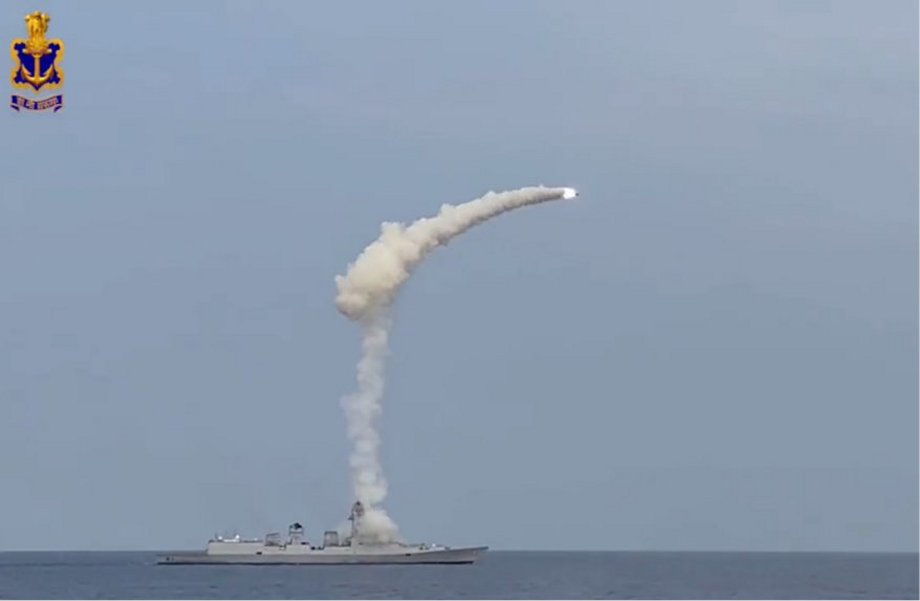According to information published by The Economic Times on February 26, 2024, the Indian Cabinet Committee on Security (CCS) has finalized a significant purchase agreement for over 220 extended-range BrahMos supersonic cruise missiles for the Indian Navy. The deal, valued at around Rs 19,500 crore, is the largest contract to date for the BrahMos missiles.
Follow Navy Recognition on Google News at this link
 INS Mormugao, a Visakhapatnam-class destroyer, launches a BrahMos missile. (Picture source: Indian MoD)
INS Mormugao, a Visakhapatnam-class destroyer, launches a BrahMos missile. (Picture source: Indian MoD)
The BrahMos missile, a product of a joint venture between India and Russia, is named after the Brahmaputra and Moskva rivers and is distinguished by its supersonic cruise capabilities.
This missile system is one of the fastest in the world, achieving speeds of Mach 2.8 to 3.0, which significantly hampers the enemy's ability to respond or intercept it effectively.
Initially designed with a range of around 290 kilometers, the missile has seen enhancements that allow it to engage targets up to 450 kilometers away, thereby extending its operational reach.
The BrahMos missile features a two-stage propulsion system that combines a solid propellant booster engine for initial acceleration and a liquid-fueled ramjet for sustained high-speed flight.
This enables the missile to maintain supersonic speeds throughout its flight path. It is capable of flying at various altitudes, from just 10 meters above the surface to up to 15 kilometers high, allowing it to avoid radar detection through low-level terrain-hugging flights or by skimming the sea surface.
Its adaptability to be launched from land, sea, and air-based platforms underscores the missile's versatility, making it an integral part of the military's strategic and tactical operations.
The BrahMos can carry a conventional warhead of up to 300 kilograms, suitable for high-explosive or submunition payloads, tailored for targeting fortified positions or area targets.
For guidance, the missile is equipped with an advanced inertial navigation system, further enhanced by GPS/GLONASS for pinpoint accuracy. In its terminal phase, an active radar homing head ensures the missile reaches its target with high precision.



